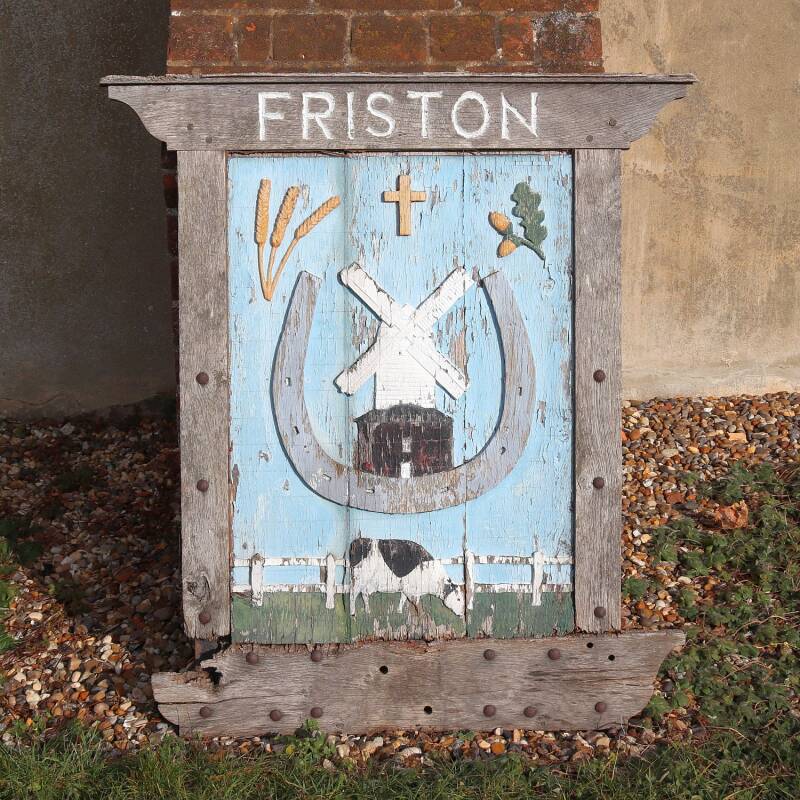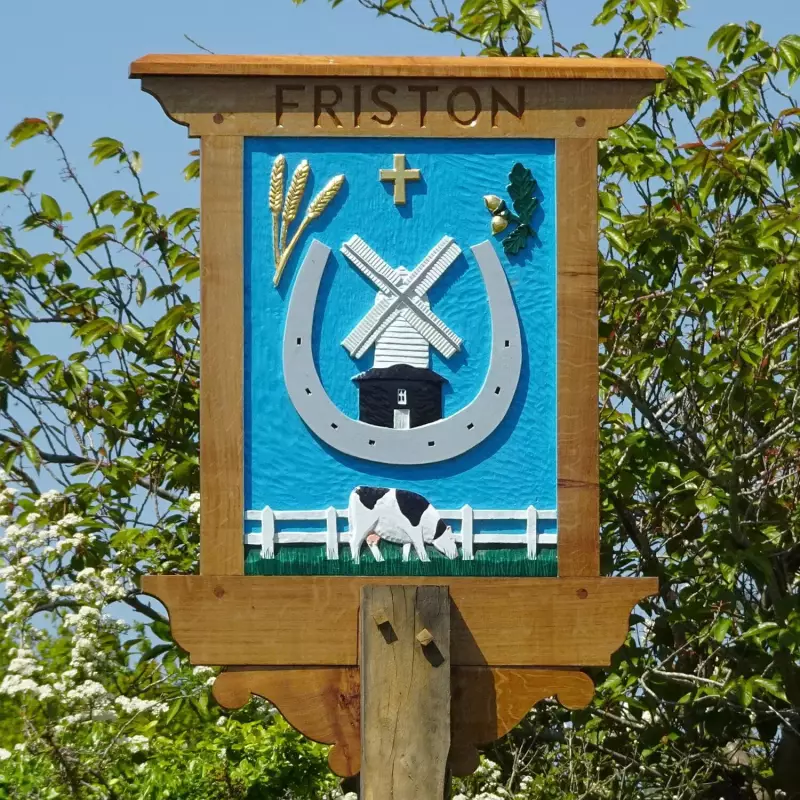Friston
The Sign
Three ears of wheat indicate Friston is a farming community, the cross is symbolic of St Mary’s church and the acorns and oak leaf represent the acres of woodland within the bounds of the parish. Friston Windmill is a Grade II* listed tall post mill with a roundhouse which is supported in a steel framework, at least while conservation work continues. The horseshoe is there to remember that at one time the village had three wheelwrights and five blacksmiths. Below a Friesian cow grazes showing that there is also a dairy farm in the parish as well as arable. The sign was erected to commemorate the Queen's Silver Jubilee in 1977. The sign was designed by local schoolchildren and was made by R.A.Wright, funded by the local WI.
The old sign was to be found outside the church when I visited open to all weather!
The Name and Population
The population was recorded as 344 at the 2011 census. The name means "Frisians farm or settlement". A Frisian is a native of Friesland and the Frisian Isles in Holland. The name is taken from Old English. It was called Frisetuna in the Domesday Book.
Other Points of Interest
The mill is 55 feet tall, one of the tallest in Europe and was built in 1811 and was still operating up until 1972.
The Church at Friston, called St Mary's Church dates back to the Norman period with the main body of the church dating back to the 14th century. The church is built with a nave, chancel, west tower and south porch which is the ideal parish church plan. The Church contains a Tudor Bible written in 1550 and is possibly the first bible to have ever been used in St Mary's church. There is also a large James I royal coat of arms, carved from boards; it was supposedly found by Munro Cautley in the 1930's, who insisted it was repaired and re-hung. It is not in good condition, but is a worthy site to see.
Friston St Mary



